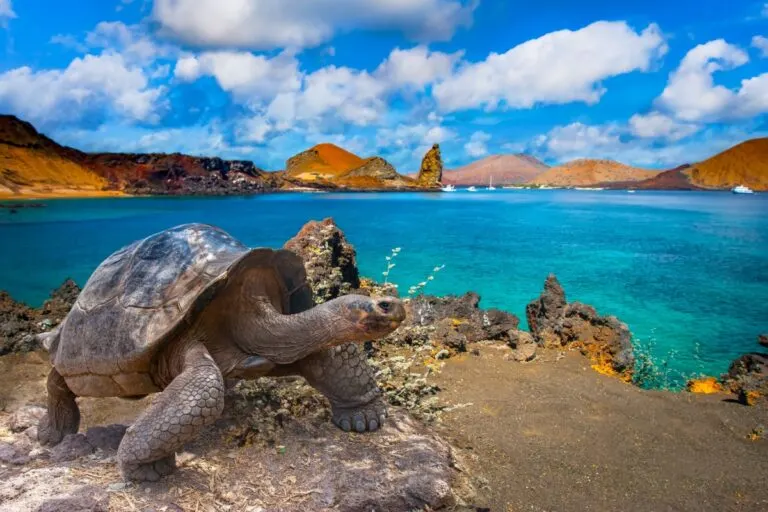One of the most beautiful destinations you can visit is the Galapagos Islands.
Despite this, only around 150,000 people visit the islands each year.
The Galapagos Islands are a remote chain of 19 volcanic islands located around 1,000 km off the coast of Ecuador.
They attract travelers keen to explore its natural beauty or snorkel in the pristine waters.
But if you’re considering traveling to the Galapagos islands this year then your trip is set to become even more expensive.
Here’s why:
Increased Entry Fee
Tourists have long had to pay an entrance fee to visit the Galapagos Islands.
This fee is intended to fund the islands’ environmental sustainability and help maintain their communities.
When the entrance fee was introduced 26 years ago it was set at $100 per person.
But from August 1 2024 this fee will double to $200 per person.
Children under the age of 12 pay less, but the cost is still $100 per child when the new pay system is introduced.

If you are an Ecuadorian resident then you will pay a reduced rate, but this has also been increased substantially from $5 per person to $30 per person.
This is a one-off fee, and tourists can spend up to 60 days on the Galapagos islands without a visa.
That means you will pay the same amount regardless of whether you are visiting for a day trip with a cruise liner or spending 30 days exploring the islands independently.
Mass tourism has had a negative impact on the delicate eco system here.
According to the local authorities the increase is ‘long overdue’ and the additional funds raised will be used to introduce more sustainable tourism practices, update infrastructure, and contribute to ongoing conservation schemes.

By increasing the entrance fee and increasing the conservation schemes on the islands, the elements that attract so many tourists can be preserved for years to come.
Why Visit The Galapagos Islands?
Tourist arrivals to the Galapagos Islands hit a record high in 2023.
And it’s easy to see why so many people are keen to experience and explore this beautiful destination.

One of the main reasons people visit the Galapagos Islands is for the incredible wildlife spotting opportunities.
From giant tortoises to penguins, marine iguanas to the blue-footed boobie bird, which is perhaps one of the most famous animals on the Galapagos islands.
Because the wildlife on the Galapagos Islands has been exposed to little human contact or major predators over the past century, it is both abundant and unique.
There’s nowhere better to visit as a wildlife lover.
Away from the wildlife, you can relax on pristine white sand beaches which are always in perfect condition thanks to the isolation of the islands, as well as the conservation efforts in place all over the islands.

Another incredibly popular reason visitors choose to travel to the Galapagos islands is to snorkel. And for good reason.
Snorkeling here is said to be some of the best in the world, especially when you are hoping to spot sea turtles.
You can often find them swimming and basking on the surface of the water in groups here.
Some of the best snorkeling spots in the Galapagos include Los Tuneles, Bartolome Island, Black Beach, and La Loberia.
Marine life is abundant here, and the waters are pristine.

The Galapagos are also a popular destination for small ship cruise lines so if you want to explore these islands within a larger group setting and as part of a more extensive trip then cruising is also a great way to visit The Galapagos.
Whether you want to walk in Charles Darwin’s footsteps, take to the beautiful turquoise waters, or visit a destination that feels relatively underexplored, there are plenty of reasons to visit the Galapagos Islands.
Credit: Source link

